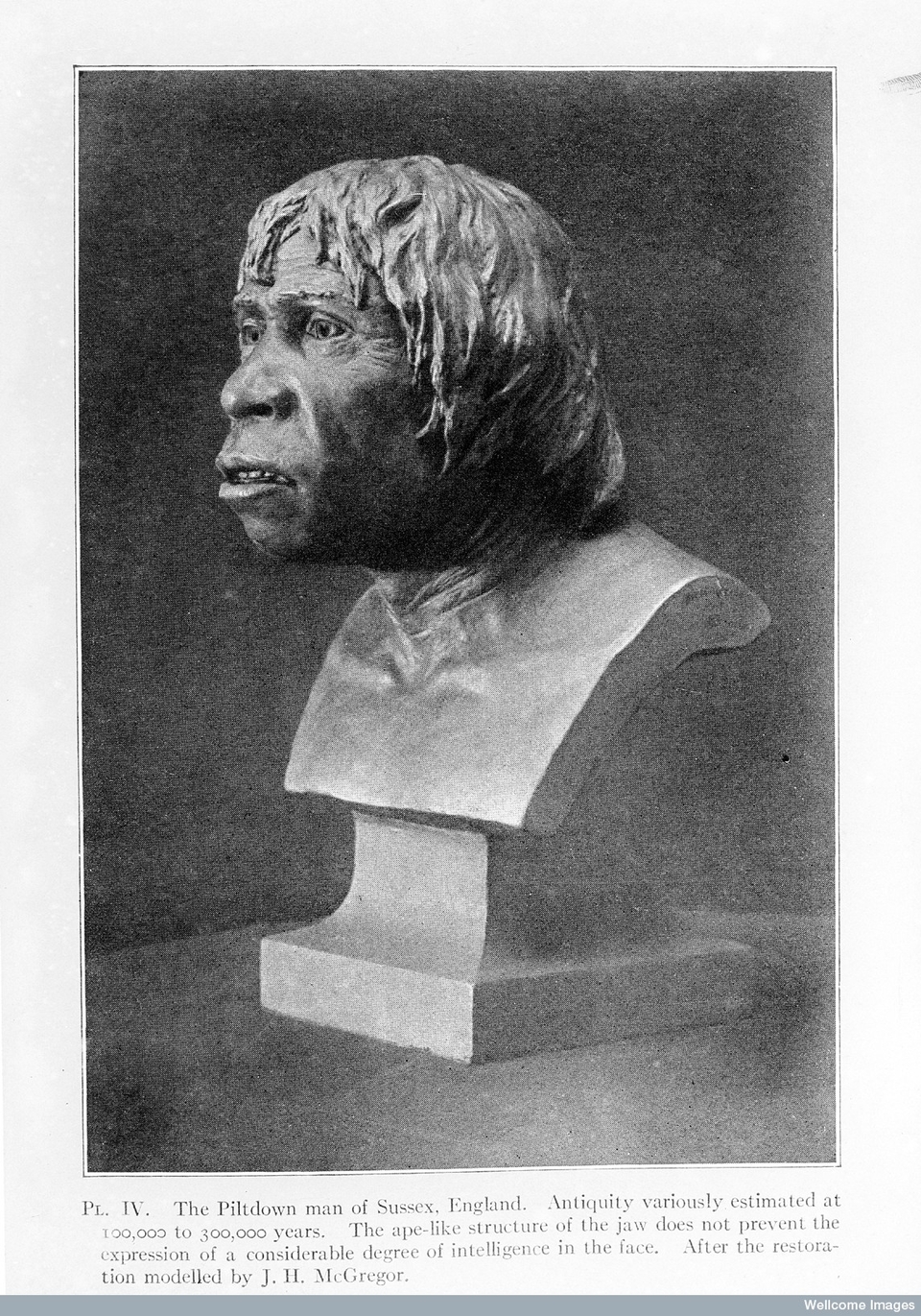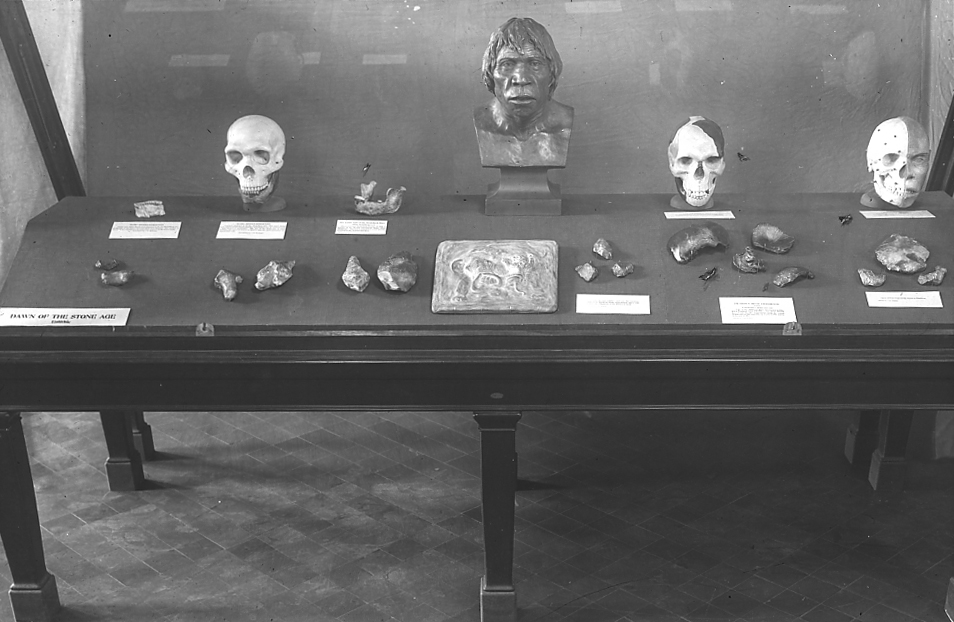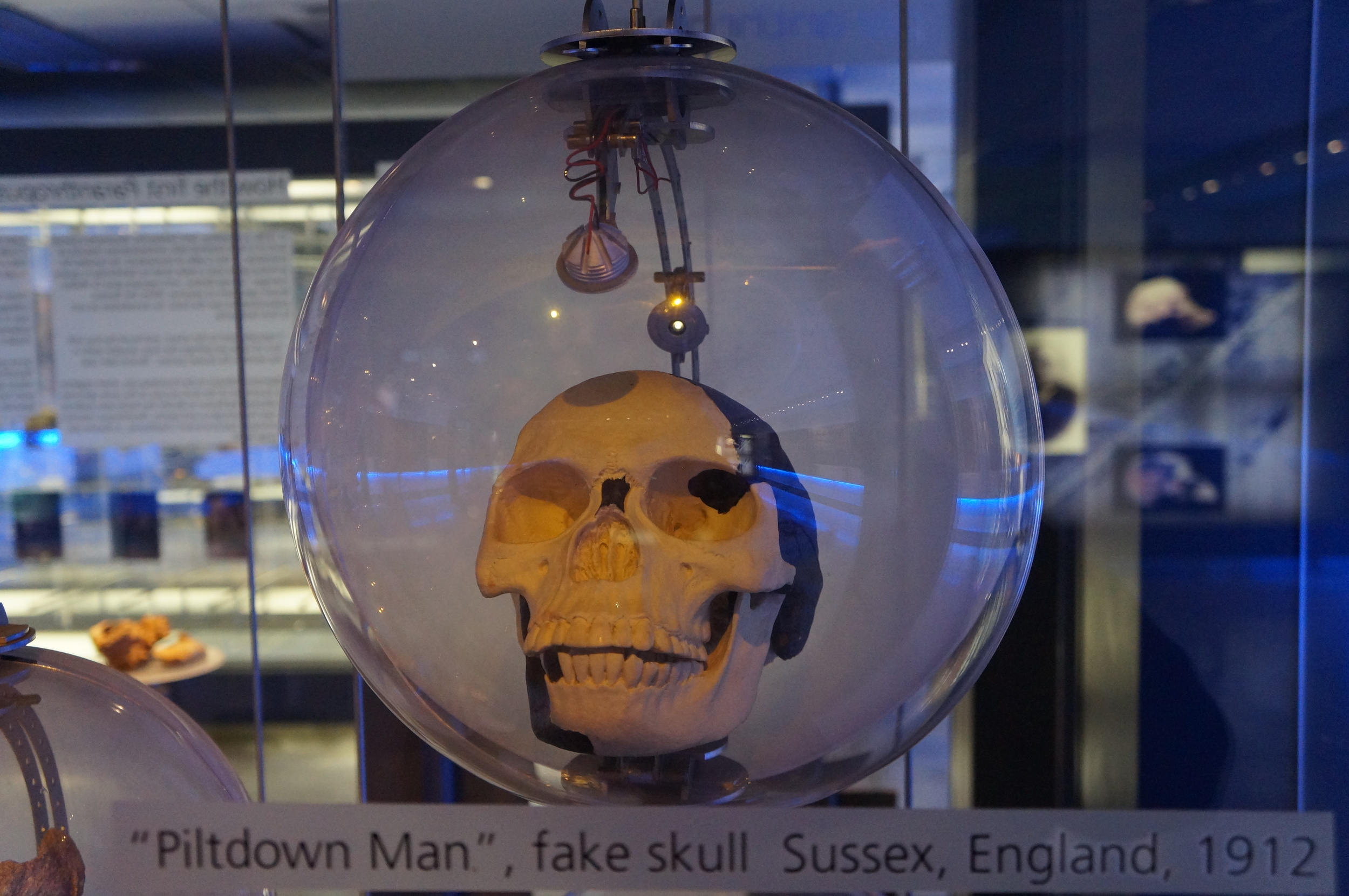“Biographies are but the clothes and buttons of the man. The biography of the man himself cannot be written.” — Mark Twain, Autobiography, 1924
“Eoanthropus is a name with no one to possess it.” — Gerrit Smith Miller correspondence, Smithsonian Institute, 1929.
Mark Twain had it right. Biography is nothing if not a tricky genre, where the clothes and buttons of a person’s life are cut, tailored, and assembled into a biographer’s narrative. Writing the biography of objects is even more complicated. A person’s life can be examined through primary sources; the stories of objects can only be told through sources secondary to those objects.
But these other sources provide different fields of view for the biographies of celebrity objects, especially fossils. Celebrity fossils – by construction – live outside of a strictly scientific environment, creating a public life through reconstructions, casts, museum exhibits, and media headlines.
It’s hard to imagine a fossil that has a more public biography than the Piltdown fossil. It’s a fossil caught up in the mystery and intrigue of its hoax – as part of its identity – that it’s easy to over overlook other aspects of the fossil’s life.
The life of the Piltdown fossil, however, is more than just the initial moment of its discovery, the controversies about its legitimacy, and its contributions to scientific debates. The fossil’s “afterlife” tells us about the business of how paleoanthropology “does science” and how that changes over time. (The gallery of newspaper clipping, museum exhibits, and reconstructions explores some of the ways that Piltdown enters, and stays, in the public view.)
This biography – this “life as object” – moves the Piltdown fossil from its problematic taxonomic classification Eoanthropus dawsonii into a twenty-first century cultural icon.





